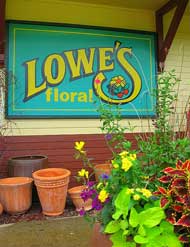NDSU Offers Tips on Repairing Flooded Landscapes
————————————————
The flood of 2011 devastated many landscapes. However, it is a new year and
spring is here, so it’s time to get landscapes back into shape.
Bare spots in the lawn can be reseeded or resodded when the ground is dry
enough to work.
“Prepare a smooth seedbed and apply a starter fertilizer,” says Tom Kalb,
North Dakota State University Extension Service horticulturist. “Usually we
wait until mid-April or later after the ground warms up and the risk of
bitter cold temperatures are over.”
A blend of hardy varieties is best. In sunny areas, look for a seed mix with
Kentucky bluegrass as a dominant seed. Fine fescues will do better in shady
areas. A minor amount (around 20 percent) of perennial ryegrass is valued in
all seed mixes because it germinates quickly and will stabilize the exposed
ground.
Crested wheatgrass and blue grama grass are better suited to
low-maintenance, rural landscapes.
Many people apply crabgrass preventer on the lawn. However, the most common
crabgrass- killing chemical (pendimethalin) will prevent all grass seeds
from germinating. If you are sowing lawn grass seed this spring, select an
alternative crabgrass killer, such as siduron, or just forget about using a
crabgrass killer. Crabgrass populations are expected to be low this year
because of the flooding and cool weather of last summer.
“When it comes to fertilizing, many of us can’t wait to feed the lawn in
early spring,” Kalb says. “Thin lawns will benefit from fertilization,
especially if you did not fertilize last fall. In the future, focus on
fertilizing the lawn in the fall, which will contribute more to root
development.”
Trees and shrubs can be planted in early spring as soon as the ground is
dry.
The lack of snow this winter will allow people to establish these plants
earlier than in most years.
Although it seems like spring, it’s too early to plant vegetable seeds in
the garden. Most of the state is susceptible to frost damage at least until
mid to late May. Many frost-tolerant vegetables, such as radish, spinach,
peas and broccoli, are planted in mid to late April.
Although it’s too early to plant your garden, you can use this nice weather
as a time to improve your garden soil. One or 2 inches of compost, peat moss
or rotted manure can be mixed into the topsoil. This organic matter will
improve the drainage, fertility and overall structure of the soil. For these
reasons, it’s also a good idea to enrich the soil of flowerbeds with organic
matter now.
“The harmful effects of last year’s floods on the garden should be over,”
Kalb says. “Any raw sewage deposited by floodwaters has had eight or more
months to decompose. Organic growers often use six months as the recommended
span between applying fresh manure and growing vegetables. However, it is
recommended that gardeners thoroughly wash their vegetables after
harvesting.”
For more information, see the NDSU publications “Home Lawn Establishment” at
http://www.ag.ndsu.edu/pubs/plantsci/landscap/h1311.pdf., “Helping Flooded
Trees and Shrubs at http://www.ag.ndsu.edu/pubs/plantsci/trees/h1592.pdf,
“Lawn and Garden Care After a Flood” at
http://www.ag.ndsu.edu/pubs/plantsci/landscap/h1593.pdf and “Annual and
Perennial Flower Selections For North Dakota” at
http://www.ag.ndsu.edu/pubs/plantsci/landscap/h322.pdf.
{ Comments on this entry are closed }

